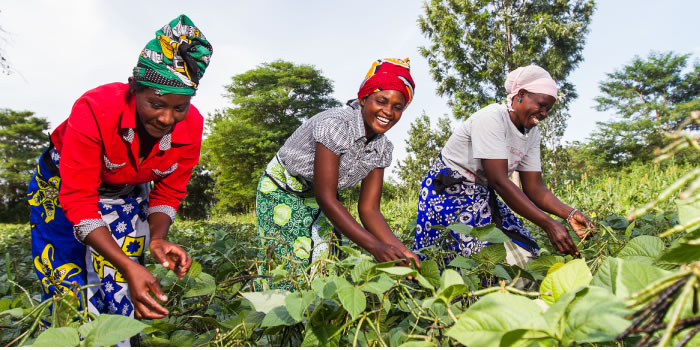
Government’s flagship program, Planting for Food and Jobs is a game changer in the agriculture sector as it has attracted many people into farming in the Upper East Region.
In 2017, government priotised the growth of the agriculture and took pragmatic steps to revamp the sector which was declining at a fast rate.
To revamp the agricultural sector, the government of Ghana introduced a flagship policy called Planting for Food and Jobs (PFJ) in 2017. The programme was to address the declining growth of agriculture in Ghana.
The PFJ policy focused on increasing food production and ensuring food security in the country as well as reducing the food import bills to the barest minimum, especially rice. The project consists of five significant pillars; supply of improved seeds to farmers at subsidized prices (50% subsidy), supply of fertilizer at subsidized prices (50% price cut out), free extension services to farmers, marketing opportunities for produce after harvest, and E-Agriculture (a technological platform to monitor and track activities and progress of farmers through a database system).
The five main crops selected are Maize, Rice, Soybeans, Sorghum and Vegetables (tomato, onion, Chili pepper) in line with priority crops as proposed in Food and Agriculture Sector Development Policy II (FASDEP II) and its investment programme.
After two years of the implementation of the program, many people who previously had lost interest in farming as a result of high cost of input materials are beginning to return to their farms.
Speaking on the Word Community Watch Show on Word FM with Simon Agana, Mr. Peter Adongo, the CEO of PETASGO Enterprise said many people are venturing into the farming sector because of their ability to purchase inputs
“ in the year that the subsidy was introduced, we can say that the demand of people wanting to farm also increased. People are ready because they can purchase the fertilizer at a low price.”
Mr. peter said the change in the desire to farm has come as a result of three things
- the change in the name from SUBSIDY SCHEME TO PLANTING FOR FOOD AND JOBS.
- The increase in the subsidy percentage from 30% previously to 50%
- The availability of the fertilizer
Mr. Peter however was not happy with the quoter system where the Minister of Agric allocate a specific number of fertilizer to each region. This he said the system accoutered for the shortage in fertilizer especially Uria in the region during the peak of the raining season.
Mr. john Akaribo, a focal person of the peasant farmers in a phone interview said the policy is a good one except that the marketing was not strategized.
“ the planting for food and jobs is good but they did not strategise the marketing issue. Marketing was one of the problems that farmers encountered”
“I think it has inproved the agric sector. A lot of farmers has increased their acreages except the marketing issue.”
Mr akaribo wondered why government has increased the price of the fertilizer from GH35.00 t0 GH45.00 in the face of COVID-19 when government is subsidizing electricity, water and other packages to sections of the economy.
“our only worry is this year. In the face of COVID-19 I was expecting that government would have stayed at where they gave us the fertilizer but they have rather come to increase”. He said with the outbreak of the pandemic this would have cushioned farmers as they begin the farming season
Mr. Francis Ennor, the regional director of Agriculture of the Upper East Region who was on the program said his sector is ready for this farming season as more measures are put in place to curtail the smuggling of fertilizer to the neighbouring countries which accountered for the shortage of the fertilizer in some parts of the country.
By: Simon Agana